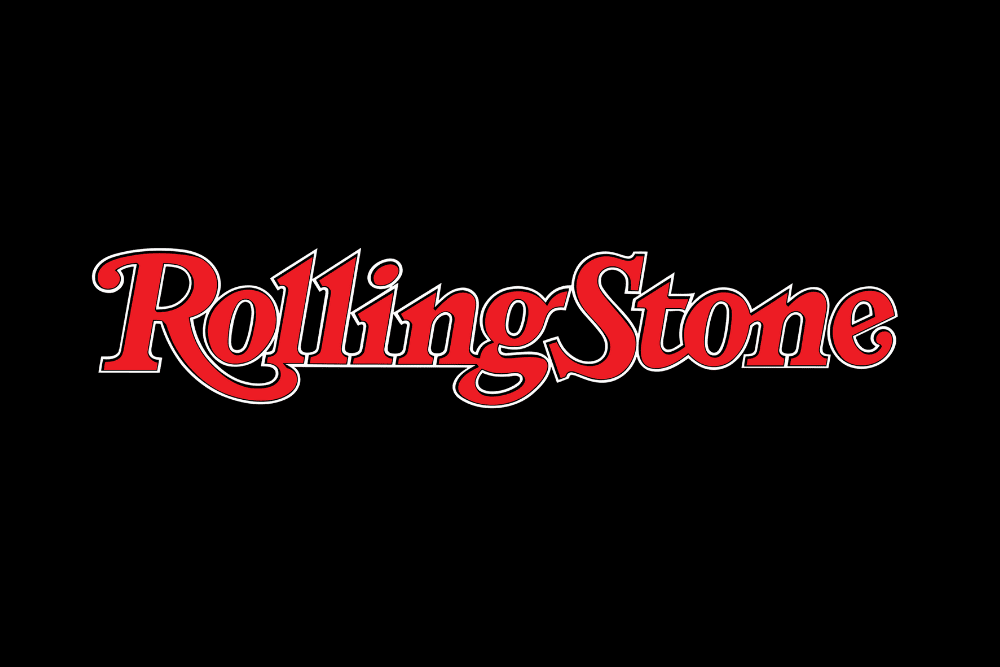Digital Harassment Creates Real Workplace Liability
The ping of a Slack notification shouldn’t make your stomach drop, but for many employees facing tech-based sexual harassment, digital communications have become a source of workplace anxiety. Employers in California face significant liability when sexual harassment occurs through company technology platforms, emails, messaging apps, or even personal devices used for work. The Equal Employment Opportunity Commission (EEOC) has made it clear that online harassment creates the same employer liability as in-person misconduct. Whether it’s inappropriate messages on Microsoft Teams, unwanted advances via work email, or offensive content shared in virtual meetings, California employers cannot ignore digital harassment simply because it happens behind a screen.
💡 Pro Tip: Document every instance of digital harassment immediately – take screenshots, save emails, and keep a detailed log with dates and times. Digital evidence can disappear quickly, but it’s often the strongest proof in harassment cases.
Facing digital harassment that’s getting under your skin? It’s high time to draw a line in the sand. Reach out to MSD Lawyers for a thoughtful review of your situation. Whether it’s through 213-401-0823 or our contact us form, we’re just a conversation away from fighting for your rights.

Understanding Your Rights When Facing a Sexual Harassment Lawyer in Los Angeles
Sexual harassment laws in employment extend fully into the digital realm under both federal and California law. Title VII of the Civil Rights Act of 1964 prohibits sexual harassment for employers with 15 or more employees (42 U.S.C. § 2000e(b); eeoc.gov/sexual-harassment), while California’s Fair Employment and Housing Act (FEHA) provides even broader protections starting at employers with just 5 employees (Cal. Gov’t Code § 12926(d); leginfo.legislature.ca.gov; calcivilrights.ca.gov/harassment-prevention). When you consult with a sexual harassment lawyer in Los Angeles, they’ll explain that digital harassment includes unwanted sexual advances through email, sexually explicit messages on work platforms, gender-based harassment in virtual meetings, or the sharing of inappropriate content through company systems. The law recognizes that harassment doesn’t require physical presence – a hostile work environment can be created entirely through screens and keyboards.
California employers have an affirmative duty to prevent and correct harassment, and this obligation doesn’t end when employees log off from the office. Under Title VII and FEHA, employers must protect workers from harassment by supervisors, coworkers, and even third parties like clients or vendors who interact with employees through digital channels. The recent California Supreme Court decision in Bailey v. San Francisco District Attorney’s Office (July 2024) established that even a single incident of severe harassment – including digital harassment – can support a legal claim (16 Cal.5th 611 (2024); courts.ca.gov). This means one egregious email, message, or virtual interaction could trigger employer liability if the company fails to take immediate and appropriate corrective action.
💡 Pro Tip: California law requires employers to have written anti-harassment policies that specifically address digital communications (2 Cal. Code Regs. § 11023(a)(1)–(2)). If your employer hasn’t updated their policies to include online conduct, they may already be failing in their legal obligations.
The Digital Harassment Investigation Process
When digital sexual harassment is reported, California employers must act swiftly to investigate and remediate the situation. The investigation timeline becomes critical because digital evidence can be deleted, accounts can be deactivated, and messages can disappear from platforms. Employers who delay their response risk both losing crucial evidence and facing increased liability for allowing a hostile work environment to continue. The California Civil Rights Department expects investigations to begin immediately upon receiving a complaint (Cal. Gov’t Code § 12940(j)–(k); leginfo.legislature.ca.gov), with most investigations completing within 30-60 days depending on complexity.
-
Immediate preservation of digital evidence – employers must issue litigation holds to prevent deletion of emails, messages, and files
-
Within 24-48 hours – initial interviews with the complainant and securing of all digital communications
-
Digital forensic analysis may be required for deleted messages or hidden communications on company devices
-
Review of company technology policies and access logs to establish patterns of behavior
-
Interviews with IT personnel who may have knowledge of system usage or inappropriate content
-
Final determination based on preponderance of evidence standard – “more likely than not” the harassment occurred
💡 Pro Tip: California’s two-year statute of limitations for FEHA claims starts from the last incident of harassment, but you must file with the Civil Rights Department within three years. Don’t wait – digital evidence degrades over time.
Holding Employers Accountable for Digital Misconduct
Resolving tech-based sexual harassment requires employers to take comprehensive action beyond simply telling an employee to “block” the harasser or avoid certain digital platforms. California law demands immediate and appropriate corrective measures, which may include terminating the harasser, implementing new technology safeguards, conducting company-wide training on digital conduct, and compensating victims for their suffering (Cal. Gov’t Code § 12940(j)(1)–(k); leginfo.legislature.ca.gov). When working with a sexual harassment lawyer in Los Angeles, victims can pursue remedies including back pay, front pay, emotional distress damages, and punitive damages against employers who knew about the harassment but failed to act. MSD Lawyers understands the unique challenges of proving digital harassment and has the technical knowledge to preserve and present electronic evidence effectively.
Employers cannot escape liability by claiming they didn’t know about digital harassment occurring on company platforms. California courts have consistently held that employers have a duty to monitor and prevent harassment in all work-related communications. This includes company-issued devices, work-related social media accounts, collaboration platforms like Slack or Teams, and even personal devices when used for work purposes. The EEOC’s position that personal information from social media sites cannot be used for discriminatory employment decisions also means employers must be careful about how they investigate and respond to digital harassment claims.
💡 Pro Tip: Demand that your employer preserve all digital communications immediately upon reporting harassment. Under California law, destroying evidence after a complaint can lead to additional legal sanctions and presumptions against the employer.
Remote Work Increases Digital Harassment Risks
The shift to remote and hybrid work arrangements has created new vulnerabilities for employees facing tech-based sexual harassment. When your home becomes your office, harassers can invade your personal space through video calls, instant messages at all hours, and persistent digital contact that blurs work-life boundaries. Behaviors considered sexual harassment in digital spaces include requesting private video calls for non-work purposes, sending sexually suggestive emojis or GIFs, making comments about appearance during video meetings, or sharing inappropriate content in chat channels. A sexual harassment lawyer in Los Angeles can help you understand that working from home doesn’t diminish your rights – employers remain fully liable for harassment that occurs through their technology platforms regardless of where you’re physically located.
Virtual Meeting Harassment
Video conferencing platforms have become new venues for sexual harassment, with perpetrators exploiting features like private chat, virtual backgrounds with inappropriate images, and even “Zoom bombing” with explicit content. The informal nature of video calls from home can embolden harassers who make comments about an employee’s appearance, living space, or who appear on camera in inappropriate attire. California employers must establish clear video meeting protocols and cannot dismiss harassment simply because it occurred in a virtual rather than physical conference room. Documentation becomes crucial – many platforms automatically record meetings and chats, creating valuable evidence that a sexual harassment lawyer in Los Angeles can use to build your case.
💡 Pro Tip: Always check your video platform’s recording and chat-saving settings. Many automatically delete chat logs after meetings end, so take screenshots during the meeting if harassment occurs.
Third-Party Digital Harassment Liability
California employers face liability not just for harassment by employees, but also for digital harassment by clients, vendors, contractors, and other third parties who interact with workers through company technology. This expanded liability reflects the reality that many employees must use digital platforms to communicate with external partners, and employers cannot allow their workers to be subjected to harassment simply because the perpetrator isn’t on the payroll. Under both Title VII and FEHA, employers must take reasonable steps to protect employees from known harassment by non-employees, including implementing communication protocols, providing alternative contacts, or even terminating business relationships with serial harassers (Title VII, 42 U.S.C. § 2000e-2(a); eeoc.gov/harassment; Cal. Gov’t Code § 12940(j)(1) & (k); leginfo.legislature.ca.gov.
Vendor and Client Communications
When clients or vendors send sexually explicit emails, make inappropriate requests through business platforms, or engage in gender-based harassment during virtual meetings, employers must act decisively. The standard isn’t whether the employer can control the third party, but whether they took reasonable steps to stop the harassment once they knew or should have known about it. This might include blocking harassers from company systems, assigning different account representatives, or establishing filtered communication channels. Recent interpretations of sexual harassment laws in employment make clear that employers who prioritize business relationships over employee safety face significant legal consequences.
💡 Pro Tip: Report third-party harassment immediately and in writing. Include specific requests for protection, such as removing you from the account or blocking the harasser’s communications.
Frequently Asked Questions
Digital Harassment Legal Concerns
Understanding your rights in the digital workplace starts with recognizing that online harassment carries the same legal weight as in-person misconduct. Many employees don’t realize that California’s strong anti-harassment laws fully apply to digital communications.
💡 Pro Tip: Save all digital harassment evidence in multiple locations – your personal devices, cloud storage, and printed copies. Employers sometimes “accidentally” delete evidence during system updates.
Next Steps in Your Digital Harassment Case
Taking action against tech-based sexual harassment requires strategic planning and proper documentation. The digital nature of the harassment often provides stronger evidence than traditional cases, but it requires quick action to preserve.
💡 Pro Tip: Create a detailed timeline of digital harassment including dates, times, platforms used, and any witnesses to virtual meetings. This timeline becomes crucial evidence for your attorney.
1. Does sexual harassment through company email or Slack create the same liability as in-person harassment for Los Angeles employers?
Yes, California and federal law treat digital sexual harassment exactly the same as in-person harassment. Employers face identical liability whether harassment occurs in the break room or through Microsoft Teams (Title VII of the Civil Rights Act of 1964, 42 U.S.C. § 2000e-2(a); eeoc.gov/sexual-harassment. The EEOC has specifically stated that online harassment creates employer liability, and California’s FEHA provides even stronger protections.
2. What constitutes behaviors considered sexual harassment in digital workplace communications?
Digital sexual harassment includes unwanted sexual messages, sharing explicit images or videos, making sexual comments during video calls, persistent romantic pursuits through work platforms, gender-based hostile messages, and creating fake profiles to harass coworkers online. Even sexually suggestive emojis or GIFs can constitute harassment when they create a hostile work environment.
3. Can my employer be liable for harassment that happens on my personal phone if I use it for work?
Yes, if you use your personal device for work purposes, harassment that occurs through work-related apps, emails, or messages can create employer liability. California courts look at whether the communication was work-related, not who owns the device. This includes WhatsApp groups with coworkers, work-related text messages, or LinkedIn messages from colleagues.
4. How quickly must Los Angeles employers investigate digital sexual harassment complaints?
California law requires employers to begin investigations immediately upon receiving a complaint. For digital harassment, this is especially critical because evidence can be deleted. Employers must issue preservation notices within 24-48 hours and complete thorough investigations typically within 30-60 days, depending on complexity.
5. What damages can I recover for tech-based workplace Sexual Harassment in Los Angeles?
Victims of digital sexual harassment can recover economic damages (lost wages, job search costs), emotional distress damages, punitive damages against employers who acted with malice or reckless indifference, attorneys’ fees, and injunctive relief requiring policy changes. The severity and duration of digital harassment, along with the employer’s response, determine damage amounts.
Work with a Trusted Sexual Harassment Lawyer
Tech-based sexual harassment cases require attorneys who understand both employment law and digital evidence preservation. The intersection of technology and workplace rights demands careful attention to electronic discovery, platform-specific features, and the technical aspects of proving digital harassment. Whether you’re facing harassment through company email, collaboration platforms, or work-related social media, having experienced legal representation ensures your digital evidence is properly preserved and presented. MSD Lawyers combines deep knowledge of California employment law with the technical proficiency needed to hold employers accountable for failing to prevent or address digital sexual harassment.
Don’t let digital harassment disrupt your peace of mind. Take the reins and contact MSD Lawyers today. Whether you call us at 213-401-0823 or use our contact us form, we’re ready to help you navigate this challenge.












